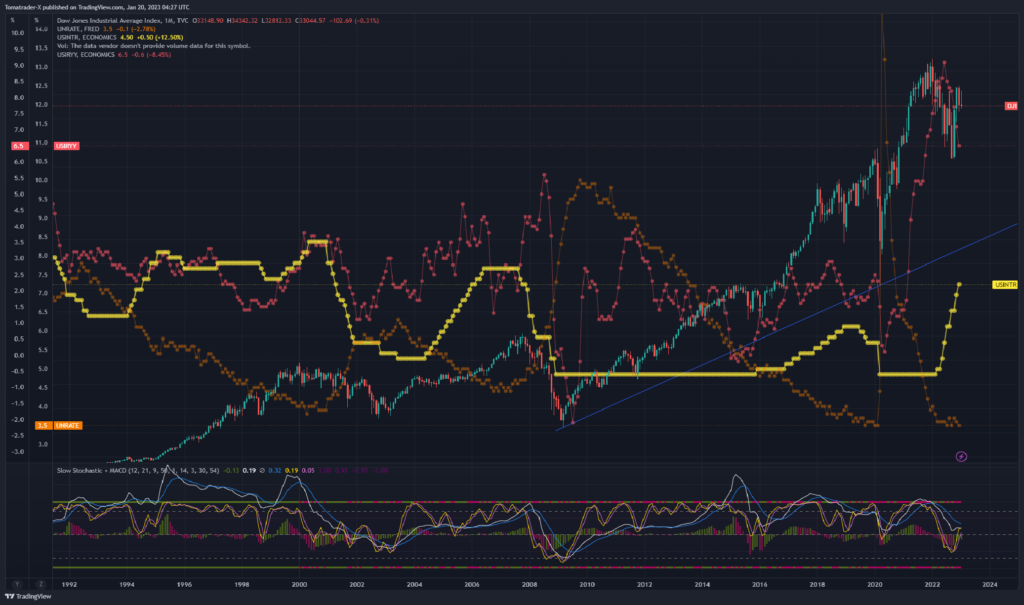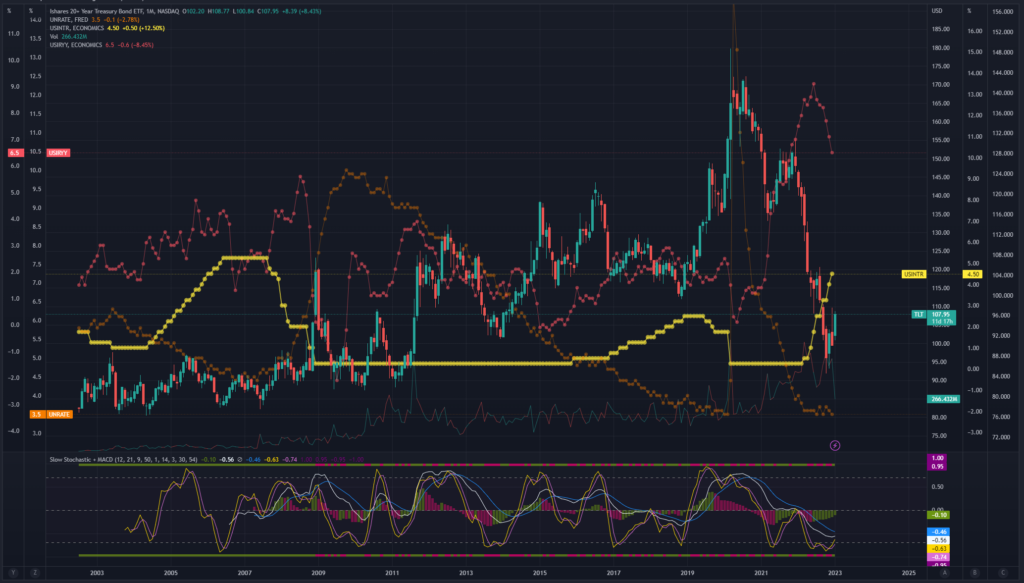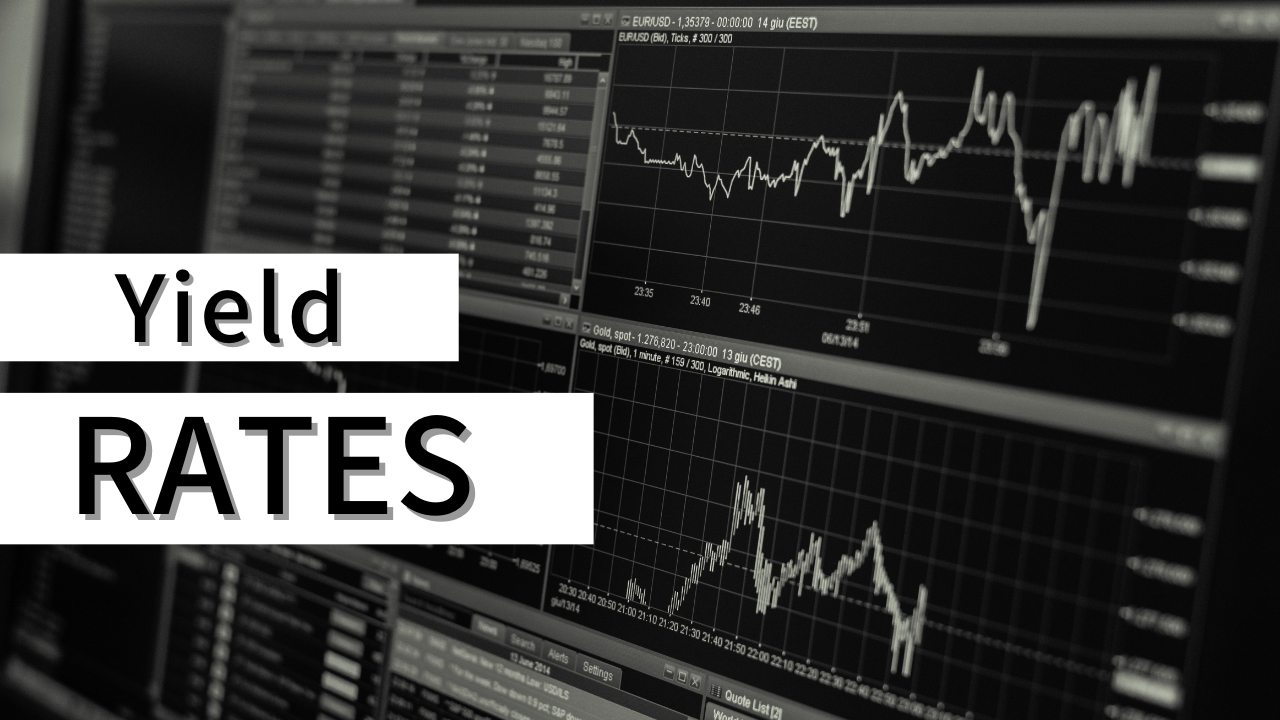Understand how long-term interest rates work and Learn how to manage your portfolio!
Hi there, Cantom here.
In this first article, which is commemorative, I will cover the interest rates and bond prices of long-term government bonds.
Although bonds might be most popular among professional investors, you can make excellent asset management decisions if you understand how interest rates and prices of long-term bonds work. This is simply because central banks like the Fed actively control them. There are also leveraged ETFs and other products, so it is a big plus to know how it works whether you are an investor who wants stable investments or a risk-selective investor.
This article explains the following items.
Contents
Long-term yields and bond prices
The relationship between yield rates and bond prices is quite simple.
- Higher rate = lower bond price
- Lower rate = Higher bond price
This is all you need to know.
If you want to know how this works, this article would be a great resource: “InvestopiaのBond Valuation: Calculation, Definition, Formula, and Example.”
Factors that may affect rates.
It would be fair to conclude that the most significant influence is the central bank’s monetary policy. On the other hand, market participants adjust their holdings when economic indicators are released, believing that such indicators may affect the central bank’s monetary policy. This, as a result, impacts demand and acts on bond prices. If demand for bonds is high, bond prices will rise, and interest rates will fall. Market participants look at various indicators to make decisions, but it is best to look at the CPI (inflation rate) and the unemployment rate. This is simply because the ultimate goal of central banks, especially the Fed in the U.S., is to stabilize prices and employment. These two goals are often referred to as the Dual Mandate.
When do long-term yield rates go up?
It is generally when long-term inflation expectations are high. The price of bonds rises sharply when the central bank tightens by raising policy rates or QT. And then, the yield rates peak at the highest point when the Fed pauses, knowing further tightening may destroy the economy. In other words, this is when bonds are at the lowest price. Central banks frequently disclose their monetary policy directions, so it is best to closely listen to them by checking their website or speech.
You can see a beautiful pattern where the yellow line, the FF rate, is followed by the 30-year long-term yield rate. Simply knowing this may make you a successful investor.

In addition, higher interest rates hurt business activities. As the rates increase, stock prices become more volatile and are likely to decline. As a side note, it is good to know this coincides with lower economic demands, where commodity prices, such as crude oil, fall.
Monetary tightening is like reducing the amount of blood flowing through your body, so the amount of currency circulating in the economy will be less, where you can observe the currency appreciation.
This long-term chart of DJI tells the impact of the Fed’s monetary policy.

When do long-term yield rates go down?
Central banks indicate they will ease monetary policy by lowering short-term rates to help the economy. The long-term yield rates immediately start to decline in reaction to the Fed’s indication of its policy change, where you can see the bonds’ price at the lowest. It’s a stage where long-term inflation expectations are low.
Around this final stage of yield rates’ decline, you can usually see prices of various assets bottoming out. You may even notice that the Fed was too late to save the economy, and in the worst scenario, there may be a massive crash commonly understood as demand destruction.
If you find it is around the last stage of tightening, noticing the long-term interest rates begin to fall, you may want to be very careful.
This is a long-term chart of TLT, an ETF linked to long-term U.S. government bonds.

What to trade in each phase
It may not be too much to say, “Understanding bonds is key to becoming a successful investor.” However, it is not always easy for individual investors like us to invest directly in government bonds, and the commissions could be expensive. The good news is it is possible to invest in ETFs linked to the government or treasury bonds using investment management services such as Wealthsimple.
Typical ETFs linked to government bonds include the following
Bull ETFs (stocks that appreciate as bonds price go “UP”)
- TLT: Most standard ETFs related to U.S. long-term bonds
- TMF: Leveraged(x3) ETF for an experienced investor or trader
Bear ETFs (stocks that appreciate as bonds price go “DOWN”)
- TBF: Inverse version of TLT
- TMV: Leveraged(x3) ETF for an experienced investor or trader
Holding TBF and TMV means you will be on the side paying interest premiums. These premiums will be reflected in their prices over time resulting in colossal decay and severe losses if held for an extended period. If you are dealing with these ETFs, it is advised to use them for short-term trades only.
I hope this article has helped you learn about bonds and the investment tools you can use. 2023 is the year when the Fed is expected to change its policy. It may be an excellent opportunity for you to start investing in bonds.

